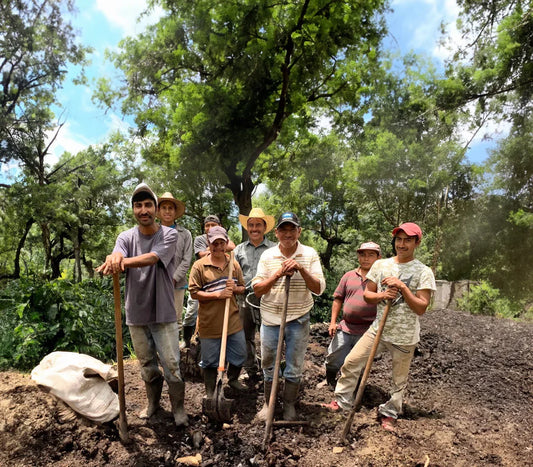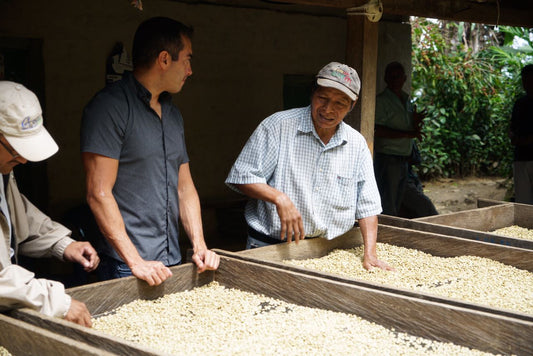
The Avocado Boom: How Our Fruit Became a Global Phenomenon
Some have dubbed it "green gold" – but to me, it has always been the humble aguacate.
Jump to:
For me, as for so many Latinos, avocados – or aguacates – were a staple of most meals growing up.
They served as the butter for every sandwich, the topping to every taco, and the humble side for a range of dishes spanning morning, noon, and night.
I also remember the light-skinned variety, pellejo, being eaten whole. Yep, with the skin left on, and heard anecdotes of people using them as an ingredient for facials or even to add shine to their hair.
Not wanting to waste them, my abuela would even plant the seeds once we'd finished off our meal.
In short, avocados are nothing new.
Trending: Avocado
Imagine my surprise, then, when I discovered later in life that the word "avocado" had become one of the most-searched on the internet. In 2016 alone, it racked up close to 50,000 searches per month in the US, according to Google Analytics.
Meanwhile, colorful photos of smashed avocados atop sourdough toast started to flood social media, as it (seemingly overnight) became a must-have ingredient in brunch cultures from Australia to the UK.
Between 2004 and 2013, imports of avocados to Canada reportedly rose by a staggering 300%.
I was thrilled to witness the rise of an everyday ingredient capturing the world's attention. But I was taken aback when some began attributing its discovery to Australia.
So, what's the story behind the avocado's meteoric rise in popularity?
Well, the reasons behind the avocado's fame outside of Latin America are multi-faceted. Let’s dive in.

The Wellness Generation
There’s no denying the global shift towards healthy lifestyles – a shift that’s almost synonymous with Millennials and Gen Z.
And avocados are nutritious powerhouses, offering a range of properties that complement a well-rounded diet. They’re a source of oleic acid (so-called ‘healthy fat’) and minerals such as magnesium to potassium to vitamin C, while also being high in fiber.
These health-boosting qualities have made them incredibly popular at a time when more and more people are paying greater attention to how they fuel their bodies.
Perhaps not so coincidentally, veganism is also on the rise: according to recent estimates, 6% of Australia's population now identify as "vegan" and, in the last decade, Australians following plant-based diets have increased by about 50%.
Filling, versatile, creamy and nutritious, avocados are a highly popular go-to for vegans around the world.
Super Bowl, Super Power
Avocados' popularity in the US skyrocketed in 2015 thanks in part to a Super Bowl ad that promoted Mexico's famous guacamole with nachos as a healthy snack.
According to one importer, after the ad aired, weekly sales of aguacates in the US shot up, exceeding a total of 50 million pounds for the first time.
This was helped by the fact that in the late 1990s, the US government had lifted restrictions on imports of avocados from Mexico. Today, a whopping 90% of avocados in the US are from Mexico.
As well as increasing the number of avocados in circulation, the ad helped shine a light on Mexican cuisine across the country, from food trucks to Michelin-starred restaurants, all of which featured avocados at their center.
For those who had never experienced the delights of true guacamole before, made with avocados from Central America, it opened up a new range of possibilities. And, naturally, attracted a legion of loyal aficionados.

Latin America’s Gift to the World
Amidst all the buzz, the aguacate remains a Latino treasure through and through, from its roots to its cultivation and its flavorful impact. While Australia produced a modest 200,000 tons in 2020, Mexico outshined with a staggering 2,400,000 tons.
Not only this, but Latin America as a whole takes the lead in terms of aguacate production, with Colombia, Dominican Republic, and Peru joining the ranks.
Each country has invented its own culinary delights with this versatile fruit. In Mexico, the renowned guacamole reigns supreme, while Venezuela crafts the flavorful guasacaca, and Chile indulges in completos with ketchup, mayonnaise, and aguacate.
Curiously, Brazil adds a sweet twist, as aguacate finds its place in smoothies, mousses, and ice creams.
The aguacate is our proud Latino emblem, a fruit that brings joy and satisfaction. So, let's celebrate its roots and flavors, but please, don't go believing it's Australian!


